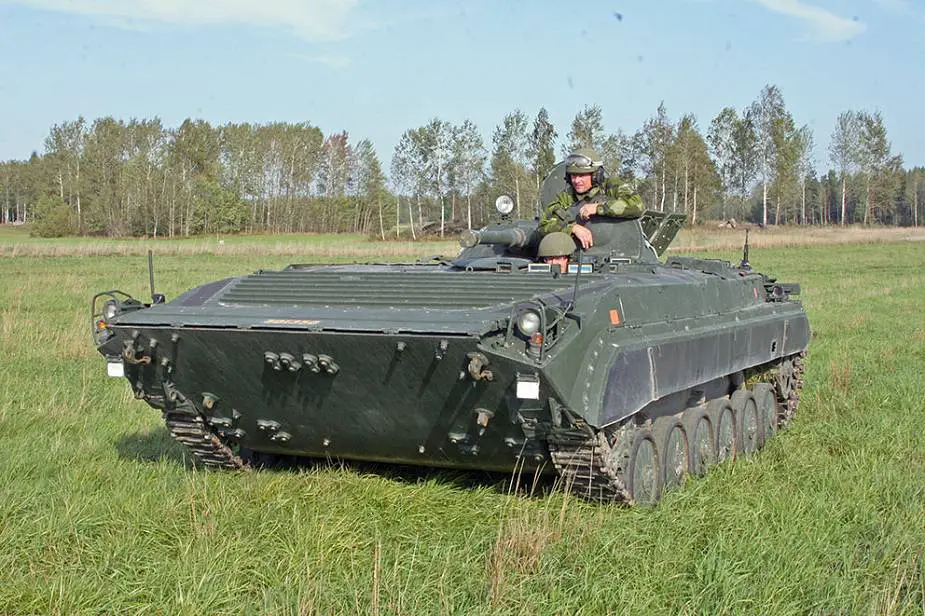Breaking news
Germany approves delivery of 58 Pbv 501 ex-East German Army BMP-1 IFVs to Ukraine.
According to information published by the Newspaper website "Welt.de" on April 1, 2022, Germany has approved the delivery of 58 Pbv 501 tracked armored IFVs (Infantry Fighting Vehicles to Ukraine. The Pbv 501 is a Swedish upgrade of ex-East German Army BMP-1 IFVs (Infantry Fighting Vehicle) that were delivered to Sweden from 1998 2001 to mechanize the Swedish Army infantry brigades.
Follow Army Recognition on Google News at this link

Swedish army Pbv 501 tracked armored IFV Infantry Fighting Vehicle, an upgraded variant of the East-German BMP-1. (Picture source: www.ointres.se)
The PbV 501 tracked armored IFVs (Infantry Fighting Vehicles) will be delivered by a Czech company that had bought the old armored vehicles of the Swedish army. To deliver the vehicles to Ukraine, the Czech company needed the agreement of Germany according to the rules of German export of weapons.
In May 1997, the Swedish Defense Equipment Administration awarded a contract worth around US$25 million to the Czech Republic VOP 026 repair facility for the modification and renovation of 350 ex-East German Army BMP-1 infantry combat vehicles for the Swedish Army.
The layout of the Pbv 501 (Pbv stands for Pansarbandvagn - armored vehicle in English) keeps the original design and armament of the Soviet-made BMP-1 tracked armored IFV (Infantry Fighting Vehicle) that entered into service with the Russian army in 1967.
The design of the BMP-1 consists of three main parts: the driver sits at the front of the hull, on the left side, with the commander sitting just behind him. The engine and transmission are on the right of the driver's and commander's positions, with the steering system at the front of the hull. A one-man turret is mounted in the middle on the top of the hull while the troop compartment is located at the rear of the hull, with seats for eight infantrymen. The hull of the BMP-1 is made of all-welded steel which provides the crew with protection from the firing of small arms of 7.62mm caliber and artillery shell splinters.
The Pbv 501 uses the same armament as the original Soviet-made BMP-1 that includes a 73 mm Model 2A28 smoothbore, a low-pressure, short-recoil gun that weighs 115 kg. The secondary armament consists of a 7.62mm coaxial machine gun mounted to the right side of the main armament.
For the Pbv 501, the launcher rail intended for the Koloma KBM 9K11 Malyutka (NATO: AT-3 Sagger) has been removed. The Swedish IFV has been upgraded to meet the NATO standard including a new external light system and a camouflage system. The internal layout was also modified with holders for Swedish weapons including sub-machine guns, machine guns and ammunition.
The other improvements of the Pbv 501 also include new fire detection and suppression system that does not contain Freon (it can be operated manually or automatically), a new independent crew heater, an improved exhaust outlet, and radio communication systems.
The Pbv 501 keeps the original powerpack and suspension of the Soviet-made BMP-1 consisting of a UTD-20 6-cylinder in-line, water-cooled diesel engine developing 300 hp at 2,000 rpm coupled to a manual transmission with 5 forward and 1 reverse gears. The torsion bar suspension on each side consists of six rubber-tire road wheels with the drive sprocket at the front, idler at the rear, and three track return rollers. The first and last road wheel stations have a hydraulic shock-absorber and the top of the track has a light sheet steel cover, which is normally removed when operating in snow. The vehicle can reach a maximum speed of 65 km/h and has a maximum cruising range of 600 km.






















